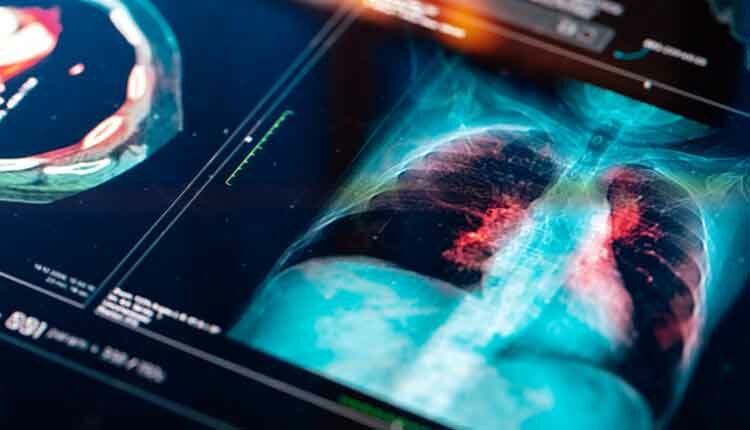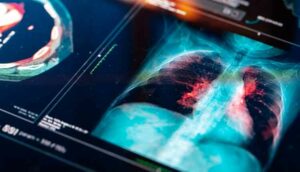 da-kuk / E+
da-kuk / E+
New Research into COVID-19 Lung Disease Underscores Importance of Oral Hygiene
Study shows that individuals with periodontal diseases are likely to pass the SARS-CoV-2 virus from their saliva into their lungs—with potentially deadly results.

The connection between periodontal diseases and the development of life-threatening illness has been well established. Recently, however, it’s been identified as a major factor in the progression of serious pulmonary complications associated with SARS-CoV-2.
VASCULAR PATHWAY
Taking a novel approach, the researchers proposed that the transmission of SARS-CoV-2 into the lungs occurs not through inhalation but via the vascular system, with the mouth as the gateway. They contend that dental plaque accumulation and periodontal inflammation provide an easy avenue to infection.
The research team hypothesized that the mouth becomes a viral reservoir in which the virus can travel from saliva to the gingival sulcus. Once there, it can survive in subgingival plaque, safe from oral mucosal immune response. It can then invade the pulmonary vessels through vascular delivery. From there, it can bind with endothelial ACE2 receptors, which can lead to vascular congestion and abnormally dilated blood vessels. They propose that the resulting endothelial dysfunction leads to the characteristic “ground glass” effect seen in affected lungs.
RADIOLOGICAL EVIDENCE
The researchers based their hypothesis in part on radiological evidence. They note that pulmonary radiological findings in patients with COVID-19 are not indicative of the effects of an inhaled pathogen, which might include bronchial wall thickening, mucous secretion, and opacification of small airways. These are not seen in COVID-19 and may even be considered as inconsistent with a COVID-19 diagnosis.
The research team further observed that a feature known as the “vascular tree-in-bud” sign (which exhibits centrilobular nodules in a branching pattern) is distinctly visible on computerized tomography (CT) scans in 64% of patients with COVID-19 lung disease. Additionally, blood flow defects appear in CTs of 100% of affected patients. These could lead to thromboembolic disease, seen in many patients with COVID-19.
Evidence of this mode of infection includes post-mortem findings that confirm the presence of the virus in the oral mucosa and salivary glands. Additionally, the fact that host cell invasion by SARS-CoV-2 is mediated by ACE2 receptors, found in the sulcus, to which viral spike proteins bind, led the researchers to speculate that the actual target for SARS-CoV-2 infection, may, in fact, be the gingival sulcus.
IMPORTANCE OF ORAL HYGIENE
The study reveals just how at risk patients with high levels of plaque accumulation and periodontal inflammation are for developing severe illness due to SARS-CoV-2. Poor oral hygiene can also increase the chances for developing other diseases such as pneumonia and chronic obstructive pulmonary disease.
Therefore, if not for the sake of oral health alone, the conclusions of this study underscore the importance of oral hygiene as a potentially life-saving measure. The most effective regimens include a combination of brushing twice daily for at least 2 minutes with a fluoride toothpaste; daily cleaning with soft dental picks and floss; and use of antimicrobial mouthrinses.
REFERENCE
- Lloyd-Jones G, Molayem S, Pontes CC, Chapple I. The COVID-19 pathway: a proposed oral-vascular-pulmonary route of sars-cov-2 infection and the importance of oral healthcare measures. J Oral Med and Dent Res. 2021;2:1–25.

